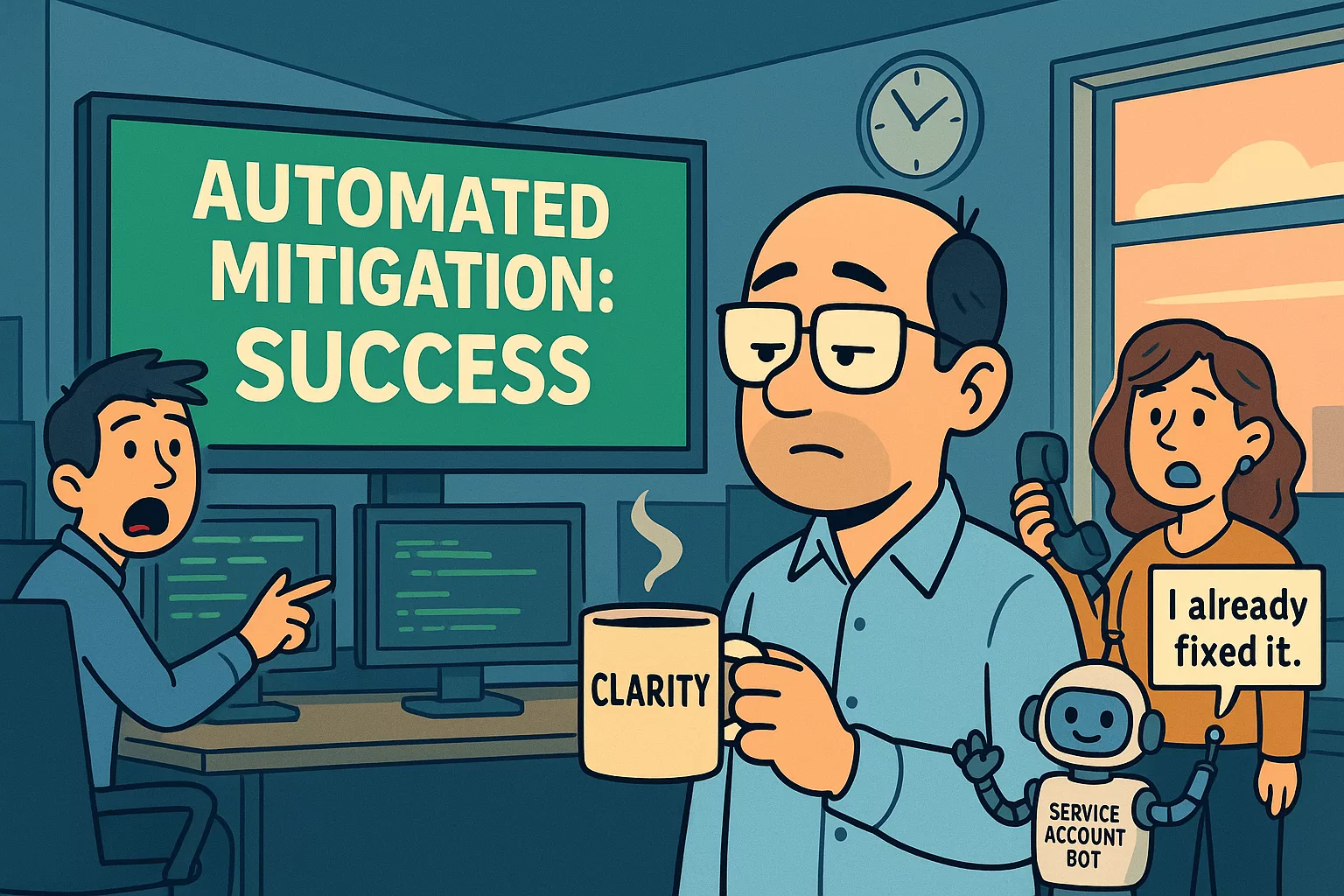Cyber incidents love bad timing. They don’t wait for daylight or coffee. They strike when everyone’s offline and your alert inbox is blissfully quiet, right before it ruins your morning.
That’s precisely how this one started.
The 3:00 A.M. Surprise
At dawn, the 24/7 SOC logged a new alert:
“Possible Compromised Account (High Severity).”
By 9:00 a.m., the room was live. Dashboards glowed, logs streamed, and caffeine flowed. The team moved fast: checking VPN sessions, endpoint telemetry, and directory logs.
Then came the worrying part: one of our privileged accounts had executed containment commands overnight. That immediately raised eyebrows. If an admin account were compromised, things could escalate fast.
Within minutes, the SOC bridge filled. Analysts dissected the timeline like detectives. “We’ve got odd logins here,” someone said. “Sessions from known bad locations,” another added. Theories flew, and so did pulse rates.
Panic Before Clarity
As we gathered more data, the tension thickened. Someone asked, “Should we suspend all admin accounts?” I started drafting an internal advisory email. The team was ready to pull every lever to stay ahead of what appeared to be an unfolding attack.
But before panic could fully bloom, we found something interesting.
The Plot Twist
Deeper into the logs, the story flipped. The “privileged activity” wasn’t an attacker. It was us.
Specifically, it was our automated mitigation control, running exactly as designed.
The system detected that a normal user’s credentials were behaving oddly and automatically launched containment. Using a service account with elevated rights, it isolated the endpoint, revoked tokens, and blocked further logins.
In other words, it had quietly done our job hours before we logged in.
When Automation Became the Hero
The bridge went silent for a moment. Then came the laughter, that mix of relief, disbelief, and caffeine-fueled irony. We’d spent an hour investigating a successful defense.
It turned out the control we’d designed months earlier had executed flawlessly.
No manual intervention. No escalation. No late-night firefight. Just clean, efficient mitigation.
Automation hadn’t failed. It had performed.
The Real Lesson: Clarity Beats Control
That morning drove home a simple truth: during incidents, the best leaders don’t chase control, they build clarity.
Anyone can hit the panic button. But the calm voice that pauses the noise, verifies facts, and explains what really happened? That’s leadership.
Automation can contain the threat, but only clarity contains the chaos.
So yes, the system outsmarted us. And honestly, that’s the best kind of surprise in cybersecurity.
Final Thought
Control is fleeting. Panic is optional. But clarity – that lasts.
Sometimes the system plays hero before you’ve even finished your first cup of coffee.
The real win is having a team that trusts it enough to laugh when it does.


Leave a Reply